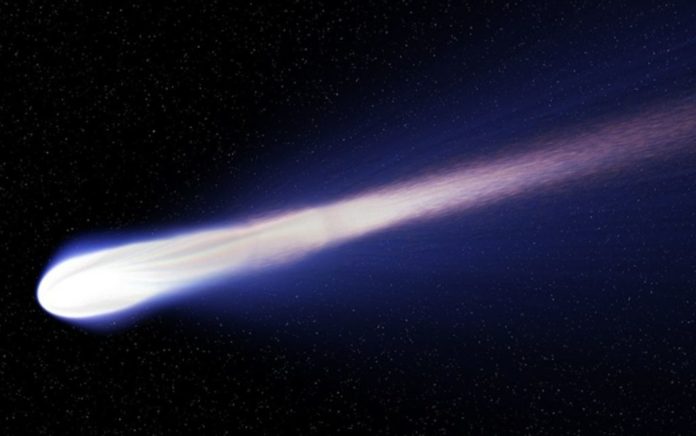The disaster at the end of the Cretaceous period was due to the collision of a comet with the Earth, and not the fall of an asteroid, as previously believed.
Astrophysicists at Harvard University have established which space object collided with Earth at the end of the Cretaceous period and caused the extinction of the dinosaurs.
- Does This Mean We Stopped Being Animal and Started Being Human Due to ‘Copy Paste’ Errors?
- The One Lifestyle Choice That Could Reduce Your Heart Disease Risk By More Than 22%
- Aging: This Is What Happens Inside Your Body Right After Exercise
- Immune-Boosting Drink that Mimics Fasting to Reduce Fat – Scientists ‘Were Surprised’ By New Findings
- Gun Violence in America: What They Don’t Talk About at the Debate
According to scientists, the cause of the disaster was not an asteroid, but a fragment of a long-period comet from the Oort cloud, located on the periphery of the solar system.
Previously, it was believed that it was an asteroid several tens of kilometers in size, but where it came from, still remained a mystery. Researchers from Harvard University have put forward a new hypothesis explaining the formation of the Chicxulub crater off the coast of Mexico with a diameter of about 180 kilometers and an initial depth of up to 20 kilometers.
On the basis of statistical analysis and gravitational modeling, experts proved that in fact a comet collided with the Earth, knocked off course by Jupiter’s gravitational field and directed towards the Sun.
The tidal force of the giant planet tore it apart, one of which collided with the Earth.
Scientists estimate that such long-period comets, which take about 200 years to orbit around the Sun, must collide with the Earth every 250-730 million years. This is about ten times more often than previously thought.
In addition, simulations have shown that about 20% of such comets are destroyed in the inner part of the solar system due to the gravitational pull of the sun.
The new hypothesis also explains the composition of the striking body. Evidence found in Chicxulub and other similar craters suggests that the objects that spawned them were of primitive composition, corresponding to carbonaceous chondrites.
“Our hypothesis predicts that other craters the size of Chicxulub in the world are likely to conform to the hammer with a primitive structure, which is not typical for conventional main asteroid belt,” stressed the study’s authors.
- Does This Mean We Stopped Being Animal and Started Being Human Due to ‘Copy Paste’ Errors?
- The One Lifestyle Choice That Could Reduce Your Heart Disease Risk By More Than 22%
- Aging: This Is What Happens Inside Your Body Right After Exercise
- Immune-Boosting Drink that Mimics Fasting to Reduce Fat – Scientists ‘Were Surprised’ By New Findings
- Gun Violence in America: What They Don’t Talk About at the Debate
We are talking about the largest confirmed crater on Earth – Vredefort in South Africa, which was formed about two billion years ago, and the Zhamanshin crater in Kazakhstan – the largest in the last million years.
The research results were published in Scientific Reports.
